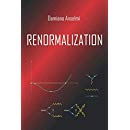Theorems
Statements and proofs of known and less known properties of quantum field theory and renormalization
Let $S(\Phi,U,K,K_{U})$ denote the solution of the master equation $(S,S)=0$, where $\{\Phi ^{A},U\}$ are the fields and $\{K_{A},K_{U}\}$ are the sources coupled to the $\Phi ^{A}$- and $U$-gauge transformations. If we replace $U$ with the solution $U^{*}(\Phi ,K,K_{U})$ of the $U$-field equations
\begin{equation}
\frac{\delta _{r}S}{\delta U}=0,
\end{equation}
then the action
\begin{equation}
S^{*}(\Phi ,K,K_{U})=S(\Phi ,U^{*}(\Phi ,K,K_{U}),K,K_{U})
\end{equation}
satisfies the master equation $(S^{*},S^{*})=0$ in the reduced set of fields and sources $\Phi,K$.
Consider a functional integral
\[
\mathcal{I}=\int [\mathrm{d}\varphi ]\hspace{0.02in}\exp \left( -S(\varphi)+\int J\left( \varphi -bU\right) \right) ,
\]
where $U(\varphi ,bJ)$ is a local function of $\varphi$ and $J$, and $b$ is a constant. Then there exists a perturbatively local change of variables
\[
\varphi =\varphi (\varphi ^{\prime },b,bJ)=\varphi ^{\prime }+\mathcal{O}(b),
\]
expressed as a series expansion in $b$, such that
\[
\mathcal{I}=\int [\mathrm{d}\varphi ^{\prime }]\hspace{0.02in}\exp \left(
-S^{\prime }(\varphi ^{\prime },b)+\int J\varphi ^{\prime }\right) ,
\]
where $S^{\prime }(\varphi ^{\prime },b)=S(\varphi (\varphi^{\prime },b,0))$.
Consider an action $S$ depending on fields $\phi_{i}$, where the index $i$ labels both the field type, the component and the spacetime point. Add a term quadratically proportional to the field equations $S_{i}\equiv \delta S/\delta \phi _{i}$ and define the modified action
\begin{equation}
\phantom{(1)}\qquad\qquad\qquad S^{\prime }(\phi _{i})=S(\phi _{i})+S_{i}F_{ij}S_{j}, \qquad\qquad\qquad (1)
\end{equation}
where $F_{ij}$ is symmetric and can contain derivatives acting to its left and to its right. Summation over repeated indices (including the integrationover spacetime points) is understood. Then there exists a field redefinition
\begin{equation}
\phantom{(1)}\qquad\qquad\qquad\phi _{i}^{\prime }=\phi _{i}+\Delta _{ij}S_{j}, \qquad\qquad\qquad (2)
\end{equation}
with $\Delta _{ij}$ symmetric, such that, perturbatively in $F$ and to all orders in powers of $F$,
\begin{equation}
\phantom{(1)}\qquad\qquad\qquad S^{\prime }(\phi _{i})=S(\phi _{i}^{\prime }). \qquad\qquad\qquad (3)
\end{equation}
The maximum pole of a diagram with $V$ vertices and $L$ loops is at most $1/\varepsilon^{m(V,L)}$, where $m(V,L)=\min (V-1,L).$ The result holds in dimensional regularization, where $\varepsilon = d-D$, $d$ is the physical dimension and $D$ the continued one. Moreover, vertices are counted treating mass terms and the other non-dominant quadratic terms as “two-leg vertices”.

 Quantum Gravity
Quantum Gravity 


